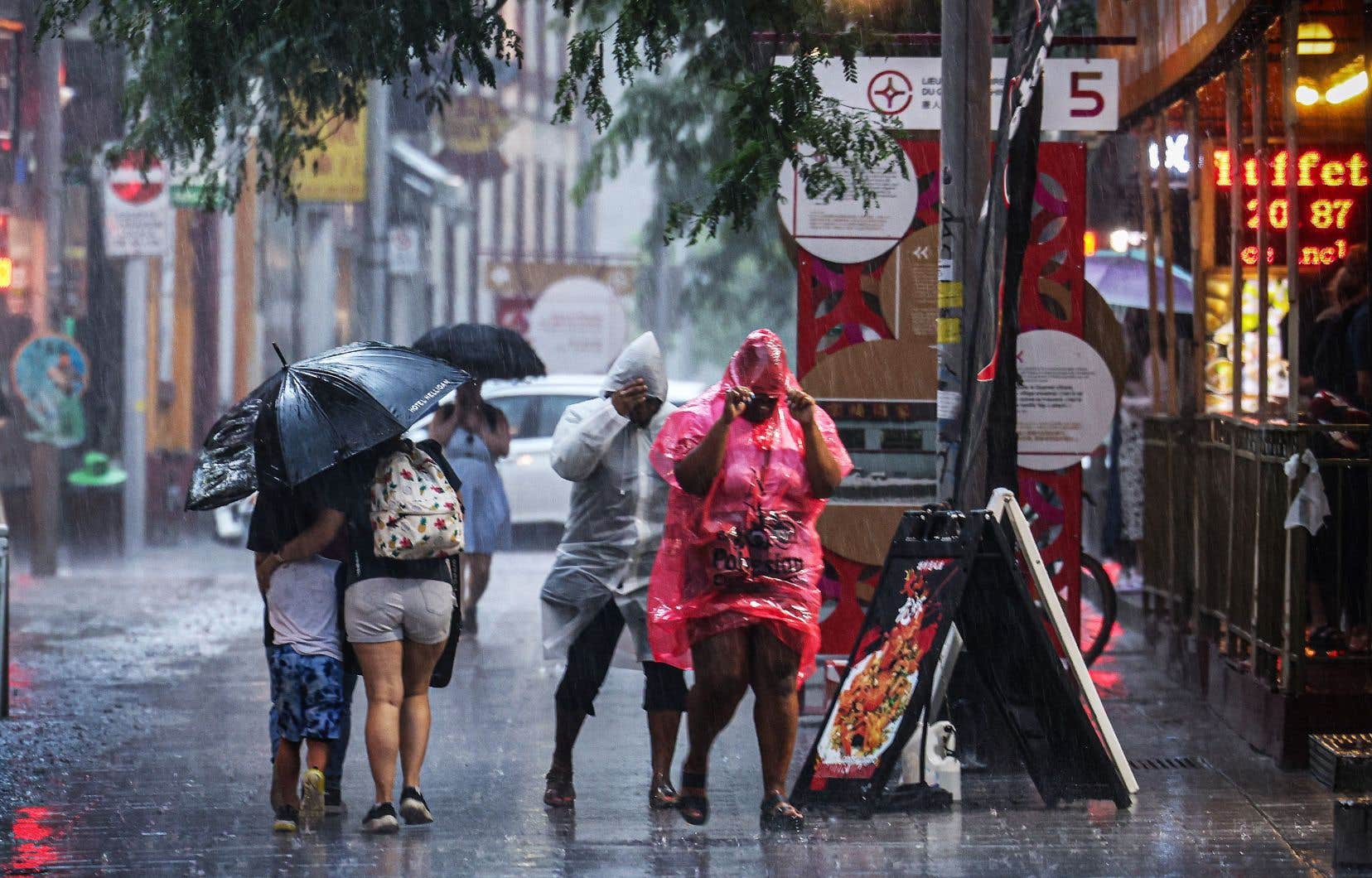Montreal received up to 88 millimeters of rain in two hours on Thursday, the equivalent of all the precipitation usually recorded in July. This deluge, which was accompanied by a tornado warning, caused flooding in more than 130 residences and led to wastewater discharges into the St. Lawrence River and the Rivière des Prairies.
“There is not a city in the world that has the infrastructure to take all that water,” said Philippe Sabourin, administrative spokesperson for the City of Montreal, on Friday. Despite the billions of dollars that the City will invest [dans ses infrastructures], there is always going to be a risk. »
Due to the overflows caused by the overflow of the sewer system, the City asks citizens to avoid practicing nautical activities in the St. Lawrence River or the Rivière des Prairies during the next 48 hours, because the water could be contaminated with bacteria Escherichia coli (E.coli).
During the storm, half a dozen overpasses had to be closed to traffic due to the accumulation of water, but by 9 p.m. Thursday evening, the situation had recovered, and the lanes were clear by Friday morning, said Philippe Sabourin.
As for the flooded residences, they are mainly located in the central districts, where the precipitation has been greater, as well as in the borough of Anjou, he added.
The torrential rains gave residents of Montgomery and Wurtele streets, in Ville-Marie, cold sweats, flooded repeatedly in recent years, in particular on September 13, 2022. “There was so much water, but the sewers worked better, which allowed some neighbors affected to have less damage, said Alice Dufour Thériault, resident of Wurtele Street. But there is emotional damage. »
Some developments had been carried out by the eco-district to reduce the risk of water accumulating near residences, but the population of the sector hopes that the City will improve the efficiency of the sewers.
The storm and strong winds also caused the fall of trees and branches on the territory. “But it’s nothing comparable to what we experienced in April,” said Philippe Sabourin, however, referring to the episode of ice storm in the metropolis.
Montreal’s water treatment plant is designed to process 88 cubic meters per second, which is a large capacity, the spokesperson said. However, in the event of a flood, the pressure is such in the underground network that the manholes can rise. “Near De Lorimier Avenue, at Ontario Street, the water arrived at 145 millimeters per hour. It is something that is rarely seen. »
To mitigate the effects of this type of heavy rain, which is likely to become more frequent, the City of Montreal has built retention basins and developed parks capable of effectively absorbing rainwater, such as Dickie-Moore Park, in Parc-Extension. It has also set up some 200 bioretention cells at the edge of the road.
